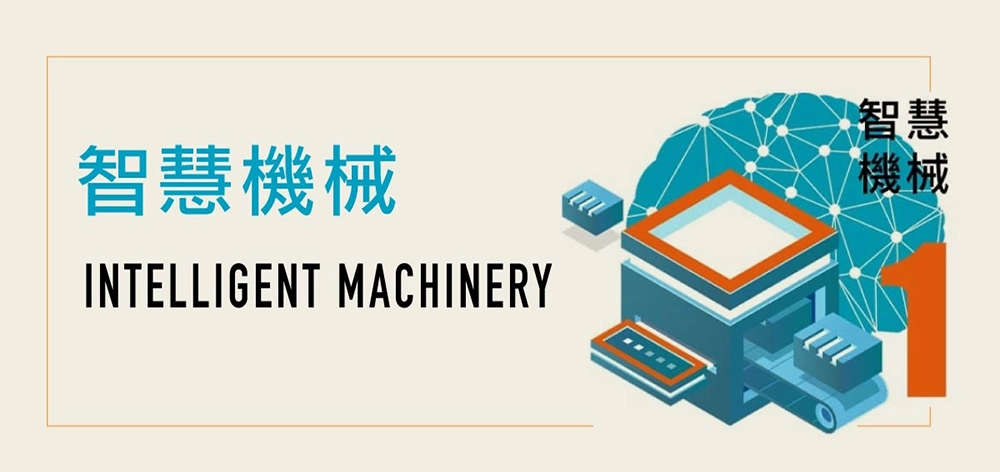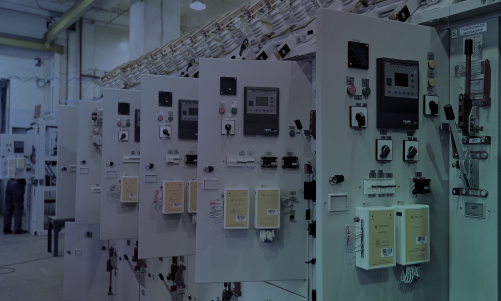How to Upgrade Precision Machinery to Smart Machinery?
FAQ|How to Upgrade Precision Machinery to Smart Machinery?As part of the government's "5+2 Industrial Innovation Plan," the smart machinery industry is one of the five key innovative industries. The primary goal is to upgrade precision machinery into smart machinery, providing a competitive advantage in smart production lines.

Implementation Motivation
Upgrading Precision Machinery to Smart Machinery
Integrating Precision Machinery with Smart Technology
In response to the trend of customized orders, how can small and medium-sized enterprises transform into smart manufacturing factories?
The answer lies in the integration of smart technology with human expertise—both are indispensable.
The global manufacturing industry is evolving towards Industry 4.0, focusing on smart technology.
By integrating IoT (Internet of Things) and AI (Artificial Intelligence), smart manufacturing is becoming a key driver of innovation.
The "5+2 Industrial Innovation Plan" includes the smart machinery industry as one of its five key innovative industries, aiming to upgrade precision machinery into smart machinery.
Definition of Smart Machinery:
Smart machinery integrates various intelligent technology elements, enabling fault prediction, precision compensation, automatic parameter setting, and automated scheduling.
It also provides total solutions and helps establish a differentiated competitive advantage.
Smart Manufacturing involves the adoption of smart machinery in industries to build high-efficiency, high-quality, and highly flexible (customizable) production lines capable of mass customization.
Additionally, IoT integration creates a manufacturing service system.
By combining precision machinery with smart technologies (AI, IoT, big data, and sensor technology), smart machinery provides a competitive edge in smart production lines.

Smart machinery integrating precision machinery with AI, IoT, big data, and sensor technology
Common Challenges
How to Upgrade Precision Machinery to Smart Machinery?
Upgrading to Smart Manufacturing with a Combination of Smart Machinery and Human Expertise?
The current trend in manufacturing is shifting toward customized orders.
However, small and medium-sized enterprises (SMEs) often face limitations in upgrading their technology.
Additionally, production methods and quality control still rely heavily on experience-based knowledge,
making a step-by-step transition to smart production lines necessary.
By incorporating smart technology into manufacturing machinery, it is possible to significantly reduce human errors and material waste.
But how can manufacturing equipment be enhanced with self-diagnosis and smart capabilities?
The simplest approach to upgrading machines to smart machinery is adding monitoring modules and leveraging human expertise to adjust parameters and workflows.
Furthermore, by integrating automation equipment such as robotic arms and IoT technology, businesses can gradually adjust and implement smart production lines according to market demand.
How to Implement
1. Using Sensors to Detect Machine Issues
Introducing IoT Technology
Internet of Things (IoT) technology forms the foundation of smart machinery.
By equipping machines with various sensors—such as temperature, pressure, vibration, and current sensors—precision machinery can collect real-time operational data and transmit it to a central management system via a network.
This data serves as a basis for subsequent analysis and decision-making.
How can machine issues be detected?
Vibrations inevitably occur when machines are in operation.
By utilizing vibration measurement technology and installing suitable sensors, it becomes possible to monitor machine conditions.
Placing sensors at critical locations ensures that key operational states of the equipment are covered.
Additionally, wireless transmission technologies such as Wi-Fi, Bluetooth, and LoRa can be used to send data to a cloud or local data center.

By using sensors for measurement and accumulating data, IoT technology further helps users gain insights into the status of their equipment. The system can immediately shut down or trigger an alert when abnormalities are detected, notifying users of equipment conditions in real time.
IIoT Unlimited. Industrial IoTHow to Implement
2. Using Big Data to Assess Operational Quality
Applying Data Analysis and AI Models
How can we identify issues in machine equipment?
During operation, machines inevitably generate vibrations.
By utilizing vibration measurement technology and installing appropriate sensors, we can monitor machine conditions effectively.
With IoT technology as the foundation, precision machinery needs to integrate data analysis and artificial intelligence (AI) technology to process collected data.
This allows for early detection of potential issues and the implementation of predictive maintenance.
AI models can analyze operational trends and abnormal behaviors, diagnosing and predicting failures based on data.
- Establish a data collection and storage framework to ensure long-term data availability for analysis.
- Implement a predictive maintenance monitoring system with real-time data visualization, alarm alerts, and historical data tracking.
- Analyze wear trends to predict potential failure points.
- Utilize machine learning algorithms such as anomaly detection and regression analysis to assess wear trends and anticipate failures.

Identifying machine issues is only the first step. It is essential to accumulate data and combine it with human expertise to analyze wear trends and enable predictive maintenance, preventing unexpected downtime. A machine learning monitoring system can track the quality of cyclic production equipment, analyze wear trends, and predict potential failure points.
VMS-ML Machine Learning Monitoring SystemHow to Implement
3. Implementing Remote Monitoring and Maintenance Systems
Integrating Remote Maintenance Support Systems
After analyzing data from the monitoring system, businesses can establish a data-driven decision-making process for remote monitoring and management of smart machinery.
By integrating Programmable Logic Controllers (PLC) and Distributed Control Systems (DCS), companies can enhance control functions and reduce maintenance response time.
Remote monitoring enables managers to track production progress in real-time and swiftly intervene in case of anomalies.
By integrating remote maintenance support systems, engineers can connect remotely to troubleshoot and resolve issues efficiently.

Supporting Smart Transformation for Factories
Digital Transformation Solutions
Many small and medium-sized traditional industries face challenges in business upgrading and transformation,
mainly due to funding and management issues.
① Lack of a large budget to invest in automation equipment, and
② Limited ability to implement digital management systems are the two primary obstacles.
In the era of smart manufacturing, digital transformation is an inevitable path,
but does it necessarily require a large investment?
For small and medium-sized traditional industries with limited resources,
is there a simpler and more seamless upgrade solution?
EMS Smart Energy Management System
As companies are increasingly required to achieve carbon neutrality or emission reduction targets to support global sustainability efforts, effective energy management plays a crucial role in achieving sustainable production goals.
Source: Online news, Taiwan Hydrogen Energy & Fuel Cell Partnership, Tech Mania, Wikipedia






